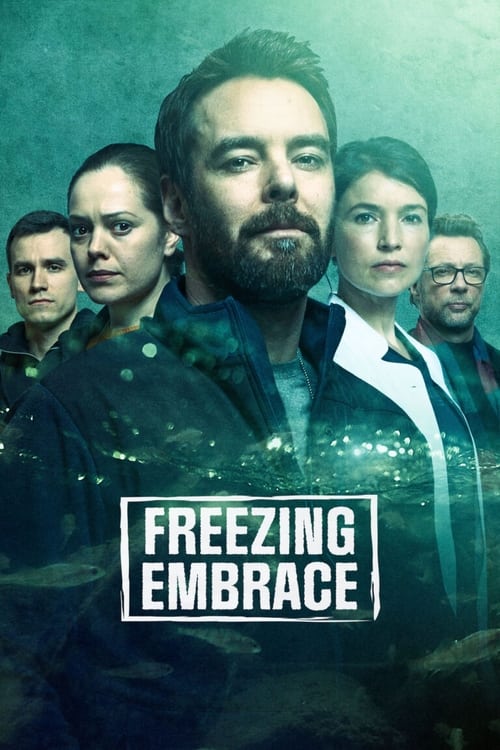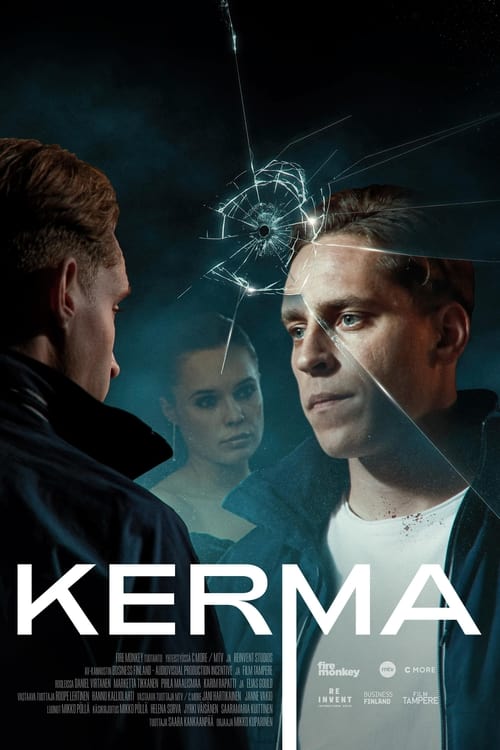
Ask Your Own Question
What is the plot?
Detective Maria Kallio is called to a crime scene in Helsinki where a young woman has been found dead in a park. The victim, later identified as a university student named Anna, is discovered with no apparent signs of struggle, raising immediate questions about the circumstances of her death. Maria, known for her keen investigative skills, begins to gather evidence and interview witnesses, including Anna's friends and family.
As Maria delves deeper into Anna's life, she learns that the victim was involved in a controversial research project about social media's impact on mental health. This leads Maria to interview Anna's professor, who reveals that Anna had been receiving threatening messages from an anonymous source. The professor expresses concern about the potential backlash from the research, hinting at a larger issue within the university.
Maria's investigation takes a turn when she discovers that Anna had been in a tumultuous relationship with a fellow student named Jussi. Jussi becomes a person of interest, and Maria arranges to speak with him. During their conversation, Jussi appears nervous and evasive, claiming he had not seen Anna for days before her death. Maria notes his inconsistent statements and decides to dig further into his background.
While examining Anna's social media accounts, Maria uncovers a series of disturbing messages that suggest Anna was being stalked. She shares this information with her partner, Detective Rami, who helps her trace the IP addresses of the messages. They find that the messages originated from a location near the university, leading them to suspect that someone within the academic community may be involved.
As the investigation progresses, Maria faces pressure from her superiors to close the case quickly. However, she remains determined to uncover the truth, driven by her empathy for Anna's family and her commitment to justice. This internal conflict intensifies as she balances her professional responsibilities with her emotional investment in the case.
Maria's breakthrough comes when she discovers a hidden camera in the park where Anna was found. The footage reveals a confrontation between Anna and an unidentified man shortly before her death. Analyzing the footage, Maria identifies the man as a former student who had been expelled for harassment. This revelation shifts the focus of the investigation, and Maria works to track down the suspect.
In a tense confrontation, Maria and Rami locate the former student, who initially denies any involvement. However, under pressure, he admits to having had a heated argument with Anna about her research. He claims he was upset about how the project portrayed students, but insists he did not harm her. Maria senses he is hiding something and continues to press him for details.
As the investigation unfolds, Maria receives a tip-off about a secret meeting involving several students who were unhappy with Anna's research. She attends the meeting undercover and discovers that a group of students had been planning to intimidate Anna into abandoning her project. The atmosphere is charged with anger and resentment, and Maria realizes that Anna's death may have been a result of this collective hostility.
With mounting evidence, Maria confronts the group of students, leading to a heated exchange. One of the students breaks down and confesses that they had intended to scare Anna but never meant for things to escalate to violence. This confession provides Maria with the final piece of the puzzle, and she works to gather enough evidence to make arrests.
In the climax of the story, Maria orchestrates a sting operation to apprehend the students involved in Anna's death. The operation is fraught with tension as Maria and her team set up surveillance to catch the suspects in the act. When the students arrive at the park, believing they are meeting to discuss their plans, Maria and her team swoop in, leading to a chaotic confrontation.
The suspects are arrested, and as they are taken into custody, Maria reflects on the emotional toll of the case. She feels a mix of relief and sorrow, knowing that while justice has been served, it comes at the cost of a young life. The episode concludes with Maria visiting Anna's family to inform them of the developments, providing a sense of closure while acknowledging the pain of their loss.
What is the ending?
In the ending of the TV show "Detective Maria Kallio," Maria successfully solves the case she has been working on, bringing the perpetrator to justice. The resolution of the case allows her to confront her own personal struggles and relationships, leading to a sense of closure and a new beginning for her.
As the final episodes unfold, the tension builds around the investigation into a series of crimes that have plagued the community. Maria, portrayed as a determined and skilled detective, navigates through various leads and suspects, each revealing layers of complexity in the case.
Scene by scene, the narrative begins with Maria piecing together the evidence she has gathered. In a dimly lit interrogation room, she confronts a key suspect, her voice steady but laced with urgency. The suspect, visibly nervous, begins to crack under pressure, revealing crucial information that connects him to the crime. Maria's eyes narrow as she realizes the implications of his confession, her heart racing with the thrill of the chase.
The next scene shifts to Maria at her desk, surrounded by photographs and case files. The weight of the investigation hangs heavy on her shoulders, and the viewer can see the toll it takes on her personal life. Her phone buzzes with messages from her family, reminding her of the sacrifices she has made in pursuit of justice. Maria's internal conflict is palpable; she is torn between her dedication to her work and her desire to be present for her loved ones.
As the investigation progresses, Maria faces pushback from her superiors, who are eager to close the case quickly. In a heated meeting, she stands her ground, advocating for a thorough investigation. Her passion and commitment shine through, showcasing her determination to seek the truth, even when it puts her at odds with her colleagues.
The climax of the story occurs during a tense standoff at an abandoned warehouse, where Maria and her team confront the main antagonist. The atmosphere is charged with suspense as they navigate through the shadows, each step echoing the stakes of the moment. Maria's heart pounds as she leads the charge, her instincts guiding her through the perilous situation. The confrontation is fraught with danger, but Maria's resolve never wavers.
In the aftermath of the confrontation, the dust settles, and the perpetrator is apprehended. Maria stands outside the warehouse, the weight of the case finally lifting from her shoulders. She takes a deep breath, allowing herself a moment of relief. The camera captures her expression, a mix of exhaustion and triumph, as she reflects on the journey she has taken.
In the final scenes, Maria returns home to her family. The warmth of their embrace contrasts sharply with the cold, harsh realities of her job. She realizes that while the case has been resolved, her personal journey is ongoing. The series closes with Maria looking out at the horizon, a sense of hope in her eyes as she contemplates the future.
Each main character finds their resolution: Maria, having proven her capabilities and reaffirmed her commitment to justice, is ready to embrace her role as both a detective and a mother. Her partner, who has supported her throughout the investigation, stands by her side, hinting at a deeper bond formed through their shared experiences. The antagonist, now in custody, faces the consequences of their actions, serving as a reminder of the complexities of human nature and the impact of choices made.
The ending encapsulates the themes of resilience, the struggle for balance between personal and professional life, and the pursuit of justice, leaving viewers with a sense of closure while also acknowledging the ongoing challenges that lie ahead for Maria Kallio.
Is there a post-credit scene?
In the 2021 series "Detective Maria Kallio," there is no post-credit scene. The show concludes its episodes without additional scenes after the credits, focusing instead on wrapping up the narrative arcs within the main storyline. Each episode ends on a note that ties up the case at hand, allowing viewers to reflect on the resolution of the mystery and the emotional journeys of the characters, particularly Maria Kallio herself. The absence of post-credit scenes maintains the show's pacing and keeps the focus on the central themes of justice, personal struggle, and the complexities of human relationships.
What motivates Detective Maria Kallio in her investigations throughout the series?
Detective Maria Kallio is driven by a deep sense of justice and a personal commitment to uncovering the truth. Her past experiences, including the loss of loved ones and her own struggles with the complexities of her career, fuel her determination to solve cases. She often reflects on her own moral compass, which guides her decisions and interactions with suspects and victims alike.
How does Maria Kallio's relationship with her colleagues evolve during the series?
Throughout the series, Maria's relationships with her colleagues are tested and developed. Initially, she faces skepticism from some team members due to her strong-willed nature and unconventional methods. However, as she proves her capabilities and earns their respect through her investigative skills, camaraderie begins to form. Key moments of collaboration and conflict reveal the dynamics of trust and teamwork, showcasing her ability to lead while also learning from her peers.
What role does Maria Kallio's family play in her character development?
Maria Kallio's family, particularly her relationship with her mother and her own children, serves as a crucial backdrop to her character development. The challenges of balancing her demanding job with family responsibilities create emotional tension for her. Scenes depicting her interactions with her mother often highlight her struggles with familial expectations, while her moments with her children reveal her vulnerabilities and the sacrifices she makes for her career.
What are some key cases that Maria Kallio investigates, and how do they impact her personally?
Throughout the series, Maria investigates several key cases that deeply impact her. One notable case involves a murder that resonates with her own past, forcing her to confront unresolved emotions and trauma. Each case not only tests her professional skills but also challenges her emotionally, leading to moments of self-reflection and growth. The complexity of these investigations often mirrors her internal struggles, making her journey as a detective both a professional and personal odyssey.
How does the setting of the series influence the narrative and character interactions?
The setting of the series, primarily in urban Finland, plays a significant role in shaping the narrative and character interactions. The cold, often harsh environment reflects the emotional states of the characters, with dark, moody visuals enhancing the tension of the investigations. The cultural backdrop influences the characters' behaviors and relationships, as they navigate both personal and professional challenges within a society that grapples with its own issues, adding layers to the story.
Is this family friendly?
"Detective Maria Kallio," produced in 2021, is a crime drama that delves into various themes and scenarios that may not be suitable for younger audiences or sensitive viewers. Here are some potentially objectionable or upsetting aspects:
-
Violence and Crime: The show features scenes of crime investigation, including depictions of murder and violence. These scenes can be intense and may include graphic descriptions or visuals.
-
Emotional Turmoil: Characters often experience deep emotional struggles, including grief, loss, and trauma, which may be distressing for some viewers.
-
Adult Themes: The narrative explores complex adult themes such as betrayal, infidelity, and moral ambiguity, which may not be appropriate for children.
-
Language: There may be instances of strong language or adult dialogue that could be unsuitable for younger audiences.
-
Psychological Tension: The show builds suspense and tension, which can create a sense of unease or anxiety, particularly in scenes involving suspects or confrontations.
These elements contribute to the overall tone of the series, making it more suitable for mature audiences.































